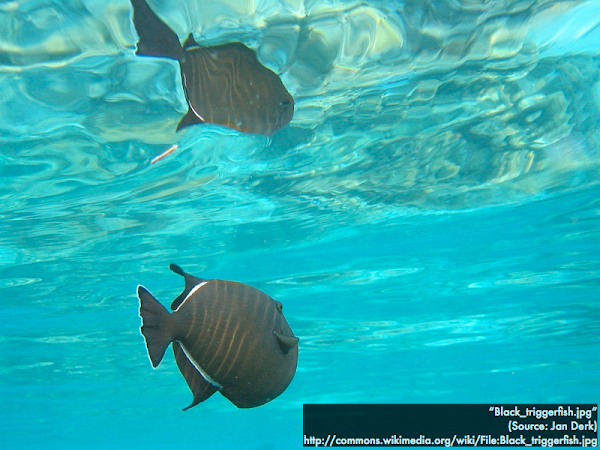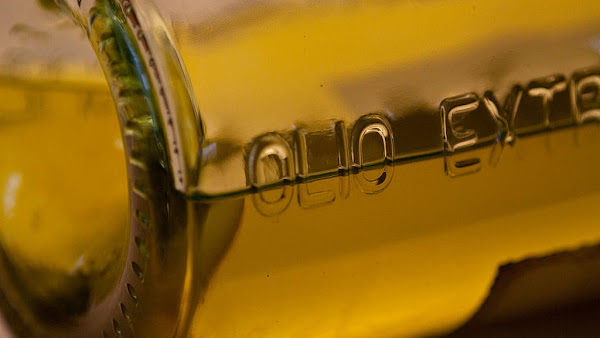Student achievement of course learning outcomes are assessed by administering an Student Assessment of Skills Survey (SASS), a five-point Likert scale questionnaire (Patrick M. Len, in development), and the Star Properties Concept Inventory (SPCI, Janelle M. Bailey, "Development of a Concept Inventory to Assess Students' Understanding and Reasoning Difficulties about the Properties and Formation of Stars,"
Astronomy Education Review, Vol. 6, No. 2, pp. 133–139, August 2007) to Astronomy 210 students at Cuesta College, San Luis Obispo, CA. This is a one-semester, introductory astronomy course (with an optional adjunct laboratory), and is taken primarily by students to satisfy their general education science transfer requirement.
The SASS is administered online during the last week of instruction, to be completed before the final exam. The SPCI is administered as a post-test in class during the last week of instruction.
The SASS results from this semester are compiled below. Values for the mean and standard deviations are given next to the modal response category for each question. Also listed is the percentage of students who have self-assessed themselves as having successfully achieving a learning outcome (responding "average," "above average," or "excellent") as opposed to not achieving success with a learning outcome (responding "very poor" or "below average").
Cuesta College
Student Assessment of Skills Survey (SASS)
Astronomy 210 fall semester 2014 sections 70158, 70160
N = 46
The questions below are designed to characterize your achievement of each of the learning outcomes by filling in a bubble on the rating scale provided to the right of each statement.
Mark the level of achievement that best describes your learning at the completion of the course.
1. Predict positions and cycles of stars, using a starwheel.
(Achieved: 98%, unachieved: 2%)
| Very poor. | [0] |
| Below average. | * [1] |
| Average. | *************** [15] |
| Above average. | ************* [13] |
| Excellent. | ***************** [17] |
2. Explain sun cycles and seasons.
(Achieved: 91%, unachieved: 9%)
| Very poor. | [0] |
| Below average. | **** [4] |
| Average. | ****************** [18] |
| Above average. | ********* [9] |
| Excellent. | *************** [15] |
3. Explain and predict lunar phases and times.
(Achieved: 93%, unachieved: 7%)
| Very poor. | * [1] |
| Below average. | ** [2] |
| Average. | ****** [6] |
| Above average. | *************** [15] |
| Excellent. | ********************** [22] |
4. Relate planets in the sky to a solar system map.
(Achieved: 89%, unachieved: 11%)
| Very poor. | [0] |
| Below average. | ***** [5] |
| Average. | ******************* [19] |
| Above average. | ************* [13] |
| Excellent. | ********* [9] |
5. Explain differences between models of planetary motion.
(Achieved: 87%, unachieved: 13%)
| Very poor. | [0] |
| Below average. | ****** [6] |
| Average. | ******************* [19] |
| Above average. | ************* [13] |
| Excellent. | ******** [8] |
6. Explain evidence for the heliocentric model of planetary motion.
(Achieved: 87%, unachieved: 13%)
| Very poor. | [0] |
| Below average. | ****** [6] |
| Average. | ******************** [20] |
| Above average. | **************** [16] |
| Excellent. | **** [4] |
7. Describe how optical telescopes work.
(Achieved: 78%, unachieved: 22%)
| Very poor. | *** [3] |
| Below average. | ******* [7] |
| Average. | ***************** [17] |
| Above average. | *************** [14] |
| Excellent. | ***** [5] |
8. Describe different powers of optical telescopes.
(Achieved: 85%, unachieved: 15%)
| Very poor. | * [1] |
| Below average. | ****** [6] |
| Average. | ***************** [17] |
| Above average. | *************** [15] |
| Excellent. | ******* [7] |
9. Explain which telescopes should be funded based on relevant criteria.
(Achieved: 87%, unachieved: 13%)
| Very poor. | [0] |
| Below average. | ****** [6] |
| Average. | ************** [14] |
| Above average. | ************** [14] |
| Excellent. | ************ [12] |
10. Explain how stars produce energy.
(Achieved: 93%, unachieved: 7%)
| Very poor. | [0] |
| Below average. | *** [3] |
| Average. | ************** [14] |
| Above average. | ******************* [19] |
| Excellent. | ********** [10] |
11. Explain the relationship between star brightness and distances.
(Achieved: 89%, unachieved: 11%)
| Very poor. | * [1] |
| Below average. | **** [4] |
| Average. | ******* [7] |
| Above average. | ************** [14] |
| Excellent. | ******************** [20] |
12. Predict the size of a star based on brightness and temperature.
(Achieved: 93%, unachieved: 7%)
| Very poor. | [0] |
| Below average. | *** [3] |
| Average. | ****************** [18] |
| Above average. | ************ [17] |
| Excellent. | ******* [7] |
13. Explain different stages a star will go through, based on its mass.
(Achieved: 87%, unachieved: 13%)
| Very poor. | * [1] |
| Below average. | ***** [5] |
| Average. | ************** [14] |
| Above average. | ***************** [17] |
| Excellent. | ********* [9] |
14. Explain evidence for the shape/size/composition of our Milky Way galaxy.
(Achieved: 91%, unachieved: 9%)
| Very poor. | * [1] |
| Below average. | *** [3] |
| Average. | ****************** [18] |
| Above average. | ***************** [17] |
| Excellent. | ******* [7] |
15. Explain evidence for how our Milky Way galaxy came to be.
(Achieved: 91%, unachieved: 9%)
| Very poor. | * [1] |
| Below average. | *** [3] |
| Average. | ******************* [19] |
| Above average. | **** [14] |
| Excellent. | ********* [9] |
16. Explain how the speed of light affects observations of distant objects.
(Achieved: 96%, unachieved: 4%)
| Very poor. | * [1] |
| Below average. | * [1] |
| Average. | ************** [14] |
| Above average. | ***************** [17] |
| Excellent. | *********** [11] |
17. Explain evidence for the expansion of the universe.
(Achieved: 91%, unachieved: 9%)
| Very poor. | [0] |
| Below average. | **** [4] |
| Average. | ************** [14] |
| Above average. | ***************** [17] |
| Excellent. | *********** [11] |
18. Describe characteristics of the universe a long time ago.
(Achieved: 93%, unachieved: 7%)
| Very poor. | [0] |
| Below average. | *** [3] |
| Average. | ********************** [22] |
| Above average. | ************** [14] |
| Excellent. | ******* [7] |
19. Explain evidence for how our solar system came to be.
(Achieved: 87%, unachieved: 13%)
| Very poor. | [0] |
| Below average. | ****** [6] |
| Average. | ******************** [20] |
| Above average. | ************* [13] |
| Excellent. | ******* [7] |
20. Describe key features of terrestrial planets.
(Achieved: 89%, unachieved: 11%)
| Very poor. | [0] |
| Below average. | ***** [5] |
| Average. | ******************** [20] |
| Above average. | *********** [11] |
| Excellent. | ********** [10] |
21. Describe key features of jovian planets.
(Achieved: 80%, unachieved: 20%)
| Very poor. | ** [2] |
| Below average. | ******* [7] |
| Average. | **************** [16] |
| Above average. | ************* [13] |
| Excellent. | ******** [8] |
22. Explain why Pluto is not currently categorized as a planet.
(Achieved: 93%, unachieved: 7%)
| Very poor. | [0] |
| Below average. | **** [4] |
| Average. | ********** [10] |
| Above average. | ********* [9] |
| Excellent. | *********************** [23] |
23. Describe plausible requirements for life.
(Achieved: 93%, unachieved: 7%)
| Very poor. | * [1] |
| Below average. | ** [2] |
| Average. | *************** [15] |
| Above average. | ******************* [19] |
| Excellent. | ********* [9] |
24. Explain difficulties in investigating the possibility for extraterrestrial life.
(Achieved: 93%, unachieved: 7%)
| Very poor. | * [1] |
| Below average. | ** [2] |
| Average. | ***************** [17] |
| Above average. | ****************** [18] |
| Excellent. | ********* [9] |
Of the 24 student learning outcomes in the SASS, 22 were self-reported as being achieved by at least 85% of students, listed below in order of decreasing success:
1. Predict positions and cycles of stars, using a starwheel. (98%)
16. Explain how the speed of light affects observations of distant objects. (96%)
3. Explain and predict lunar phases and times. (93%)
10. Explain how stars produce energy. (93%)
12. Predict the size of a star based on brightness and temperature. (93%)
18. Describe characteristics of the universe a long time ago. (93%)
22. Explain why Pluto is not currently categorized as a planet. (93%)
23. Describe plausible requirements for life. (93%)
24. Explain difficulties in investigating the possibility for extraterrestrial life. (93%)
2. Explain sun cycles and seasons. (91%)
14. Explain evidence for the shape/size/composition of our Milky Way galaxy. (91%)
15. Explain evidence for how our Milky Way galaxy came to be. (91%)
17. Explain evidence for the expansion of the universe. (91%)
4. Relate planets in the sky to a solar system map. (89%)
11. Explain the relationship between star brightness and distances. (89%)
20. Describe key features of terrestrial planets. (89%)
5. Explain differences between models of planetary motion. (87%)
6. Explain evidence for the heliocentric model of planetary motion. (87%)
9. Explain which telescopes should be funded based on relevant criteria. (87%)
13. Explain different stages a star will go through, based on its mass. (87%)
19. Explain evidence for how our solar system came to be. (87%)
8. Describe different powers of optical telescopes. (85%)
However, two student learning outcomes were self-reported as being achieved by less than 85% of students, listed below in order of decreasing success:
21. Describe key features of jovian planets. (80%)
7. Describe how optical telescopes work. (78%)
Compare these student learning outcomes self-reported as not being achieved (7, 21) with those from previous semesters (
spring semester 2014: (4, 6, 14, 15, 18, 24);
fall semester 2013: (6, 9, 14, 15, 17, 18);
spring semester 2012: (6, 18);
fall semester 2011: (4, 7, 8)).
Student learning outcomes 10, 11, 12, and 13 for Cuesta College students were
directly assessed using the Star Properties Concept Inventory (excluding negative
informed consent form responses):
Star Properties Concept Inventory v3.0
Astronomy 210 fall semester 2014 sections 70158, 70160
N = 74
ave ± stdev = 60% ± 16%
This semester's SPCI scores are slightly higher than results from 1,100 large research university students that have completed introductory astronomy and earth sciences courses (Bailey, 2007), where the average was 51% (no further statistics provided); and also slightly higher than SPCI results from earlier semesters at Cuesta College.
As per the ACCJC (Accrediting Commission for Community and Junior Colleges), results from this
indirect assessment SASS tool, along with the
direct assessment SPCI tool will be used for course/program improvement by increasing emphasis on these lowest learning outcomes in instruction in future semesters.
Previous posts:



































